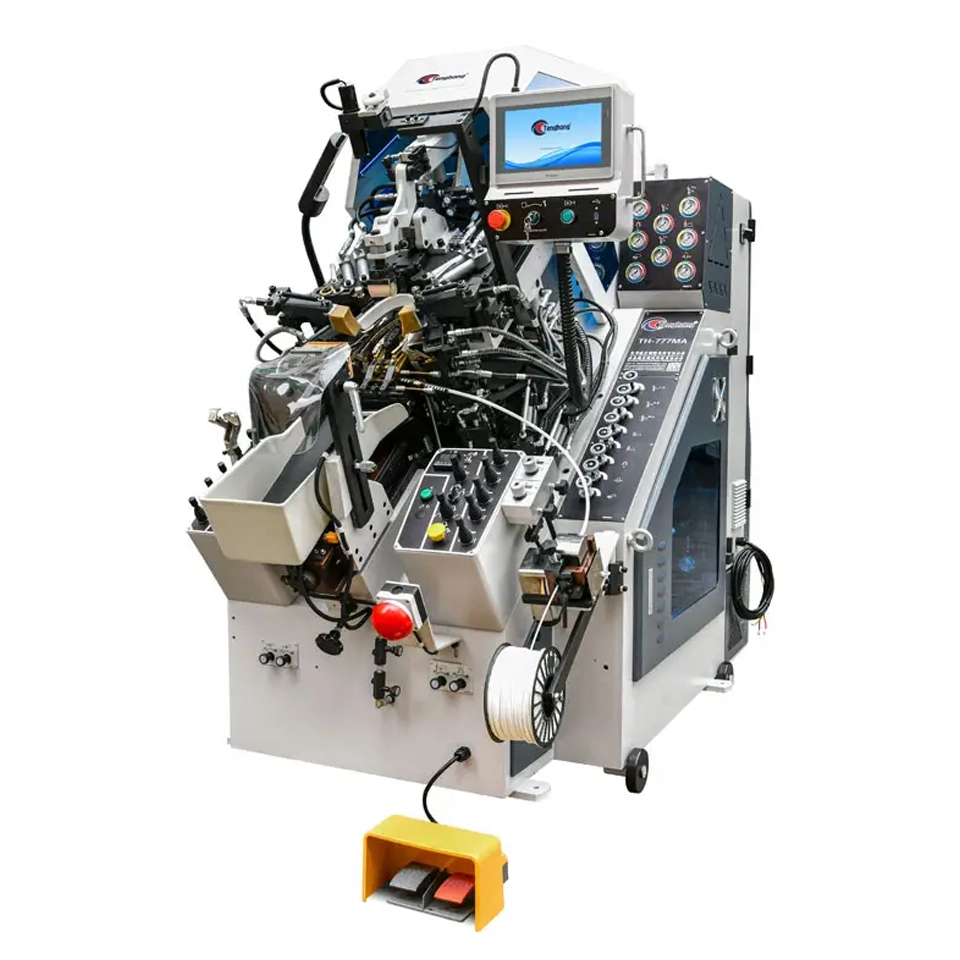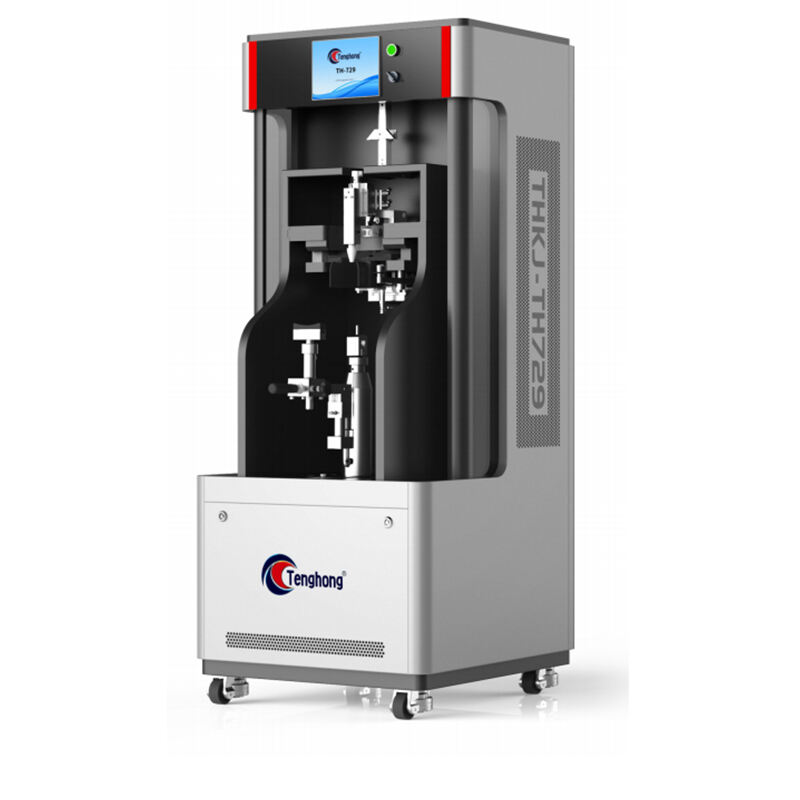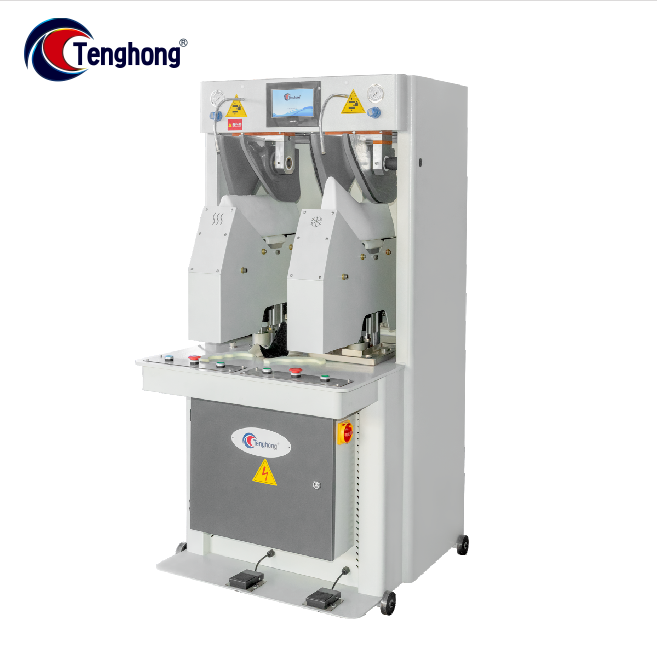Precision Engineering in Shoe Molding Machines: Achieving Consistent Boot Shapes
The Science Behind Consistent Boot Shapes
Understanding Thermal Dynamics in Molding Processes
Heat management is really important when it comes to forming shoes from different materials, and this affects how consistent and long lasting the final boots will be. Basically, it's all about controlling where the heat goes and how it spreads out while making the products. Getting the temperatures just right makes a big difference in how well shaped the boots end up being and how durable they turn out. Keeping things at the right temperature during the molding stage matters a lot for quality results. Some tests showed that when makers get temperature control spot on, they can actually improve both the fit and strength of boots by around 15%. Different materials behave differently too. Leather versus synthetic blends react to heat in their own ways, which impacts how precisely they can be formed. Knowing these material characteristics lets factory workers tweak temperatures as needed so every pair keeps its shape reliably over time, no matter what kind of wear and tear they experience.
Pressure Control: The Key to Uniform Material Distribution
Getting pressure right matters a lot when it comes to making sure materials spread out evenly across boot shapes during molding. When done properly, this prevents those annoying weak spots we all hate and makes the finished boots last longer while looking better too. Most modern shoe molding equipment now comes equipped with fancy pressure control methods like pneumatic or hydraulic systems. Big manufacturers have been using these systems for years now because they just work better. Take XYZ Footwear in Germany for instance they reported cutting down on wasted materials by about 20% after fine tuning their pressure settings. And guess what? Their customers started complaining less about quality issues. There's definitely something there between how well pressure is controlled and what ends up on store shelves. That's why serious boot makers invest in good machinery and train their staff properly. After all, nobody wants to sell pairs that look different from one another or fall apart after a few wears.
Addressing Shrinkage Variations in Different Shoe Materials
Shrinkage remains a big headache for anyone making shoes, since different materials react completely differently when heated, which affects how the finished product fits and feels on someone's foot. Take leather versus synthetics for example leather tends to contract quite a bit during processing while synthetics have their own quirks too. That means manufacturers need to tweak things pretty significantly based on what they're working with. Some common fixes include extending cooling periods after molding or redesigning molds altogether to account for expected shrinkage. Industry folks generally report around 1-3% shrinkage with quality leathers, but synthetics can sometimes shrink as much as 5% depending on how hot things get during production runs. Getting this right matters a lot because nobody wants boots that keep getting smaller over time or ones that never quite sit right on the feet.
Core Components of Precision Shoe Molding Systems
Multi-Axis Pincer Mechanisms Explained
The multi-axis pincer mechanism plays a key role in making shoe molding processes both flexible and precise. These systems let manufacturers work with shoe materials in ways that create detailed designs while maintaining good quality throughout production runs. Recent tech improvements have made these mechanisms much better at what they do, giving operators more movement options and finer control over the process, something that matches up well with today's complex shoe designs. Take modern stitching machines for example many now come equipped with advanced pincer setups that handle all sorts of styles from simple models to highly decorative ones. Most setups feature adaptable jaws and settings that can be tweaked depending on what material is being worked with or what pattern needs to be created. These kinds of upgrades affect how attractive the finished shoes look, but they also speed things up during manufacturing, which explains why so many factories rely on them when production demands are high.
Intelligent Heating/Cooling Stations
Smart heating and cooling units are essential for keeping temperatures stable throughout the shoe manufacturing process. When these systems maintain just the right heat levels, they help mold shoes consistently and accurately every time. Manufacturers have started incorporating artificial intelligence into their equipment, which means these temperature control systems can now adapt automatically and produce better quality products. Take some modern shoe presses for instance they come equipped with sensors that constantly check temperature readings and tweak heating or cooling as needed based on actual conditions inside the machine. This leads to faster production runs while using less electricity. Factory managers report seeing real improvements after installing these intelligent stations, not only cutting down on wasted materials but also getting more pairs made per hour without compromising on quality standards.
Advanced Positioning Sensors in Modern Equipment
Positioning sensors play a vital role in achieving precision during shoe molding operations. When properly installed, they make sure every part gets positioned correctly and stays aligned throughout manufacturing, which cuts down on flaws and results in better quality products overall. The footwear industry utilizes several different sensor technologies including optical systems and capacitive devices. Each type works best for particular tasks - some check material integrity while others help position parts just right when assembling shoes together. Factory data indicates that adding these advanced sensors typically boosts accuracy around 30 percent and brings down error rates substantially. Beyond improving product quality, these sensors actually speed things up on the production floor too, making them essential tools for anyone serious about efficient, high quality shoemaking today.
How Automated Control Systems Revolutionize Lasting Processes
Closed-Loop Feedback Systems in Operation
In the world of shoe molding, closed loop feedback systems have changed everything when it comes to keeping things precise during production runs. What makes them so effective is their ability to take live data from the factory floor and tweak the manufacturing process on the fly, which means shoes come out exactly how they should be every time. Traditional approaches just don't stack up against this kind of responsiveness since there's no way to monitor conditions as they happen and make necessary changes immediately. Industry insiders talk about how much better these systems perform compared to older techniques because they literally cut down on wasted materials while making sure each pair meets quality standards consistently. The numbers back this up too many companies report cost savings after switching over simply because they're wasting less raw material and getting more output per hour. For anyone running a shoe manufacturing operation today, investing in closed loop technology isn't just smart business it's practically essential if staying competitive matters at all.
Programming Complex Shoe Patterns with Digital Memory
The use of digital memory is changing how we create complicated shoe designs, making them much more precise and customizable than before. When manufacturers store detailed pattern information digitally, they can recreate exact copies time after time, yet still make small changes for individual customers' preferences. Digital methods beat out old school analog approaches because they work better and give designers more freedom to experiment. Real world examples from factories show what happens when companies adopt this technology: their product ranges improve significantly, and customers get shoes made specifically for their needs. There's definitely a learning curve though. Many businesses struggle getting their current employees comfortable with these new systems. Most find success by investing in proper training sessions and slowly introducing the technology rather than trying to implement everything at once. Looking ahead, digital memory isn't just updating shoe manufacturing processes, it's paving the way for completely new kinds of custom footwear that weren't possible before.
Precision Machinery Spotlight: Innovations in Modern Shoemaking Equipment
TH-777MA: 9-Pincer Computer Memory Control System
The TH-777MA represents a major leap forward in shoe manufacturing technology thanks to its unique 9-pincer design. With this system, operators can handle all sorts of different shoe forms without compromising speed or accuracy during the molding process. What really sets it apart are the computer memory controls built right into the machine. These let technicians fine tune operations using pre-set parameters stored within the system itself. When those settings get loaded into the device, what happens next is pretty remarkable the machine produces consistently high quality shoes every single time. This cuts down on mistakes made by humans and boosts productivity across the board for footwear manufacturers looking to stay competitive in today's market.

Fewer problems mean happier operators these days since the machine actually tells them what's wrong instead of just shutting down randomly. Most folks who work with it say they spend way less time fixing issues now. The TH-777MA really boosts productivity when switching between various shoe models because it remembers around 500 different settings. No more fumbling through menus every time something changes. Operators get extra breathing room throughout their shifts, which means they can actually check the finished products properly instead of rushing through adjustments all day long.
To learn more, visit the TH-777MA product page for detailed specifications and features.
TH-729: Pneumatic Heel Seat Lasting Technology
The TH-729 comes equipped with some pretty impressive pneumatic tech that helps get the heel seat just right when making shoes, something that makes all the difference in how they actually fit on someone's foot. Unlike older techniques, this pneumatic setup offers much better flexibility. It creates consistent pressure throughout the process while still adapting to different styles of footwear design. What this means in practice is fewer problems during mass production runs. Shoes from one batch tend to fit about the same as those made later on, which saves time and money for manufacturers dealing with quality control issues down the line.

What people are saying plus some actual testing shows the pneumatic system in the TH-729 works better than old school mechanical setups when it comes to getting things right and doing it faster. The machine has this cool dual cylinder setup which makes working with it much easier on the body while still cranking out more work per movement. Manufacturers who have switched over report noticeable improvements in their production numbers without having to push harder or spend extra money on maintenance. These kinds of gains are making quite an impression among competitors trying to keep up with changing industry standards.
Discover more details by visiting the TH-729 product page.
TH-7900: 3D Vamp Molding with Multi-Material Capability
The TH-7900 machine offers state-of-the-art technology for molding 3D vamps, accommodating a variety of materials that expand design possibilities. By providing the capability to handle different materials like synthetic leather, it caters to diverse consumer preferences, allowing manufacturers to meet evolving market demands for customization and aesthetic excellence.

People who have used the TH-7900 report that it really boosts creativity when designing shoes while also speeding up production time considerably. The machine's flexibility helps shoe makers keep up with what customers want these days, especially since there's been this big push towards custom made footwear lately. What makes it stand out is how it can shape different vamp sizes perfectly without needing those annoying double cuts that often damage materials during traditional methods.
For further information, visit the TH-7900 product page.
Maintaining Micron-Level Accuracy in High-Volume Production
Predictive Maintenance Strategies for Molding Machines
Getting predictive maintenance right makes all the difference when trying to hit those tiny micron tolerances needed for mass produced shoes. The whole point is catching problems with machines before they actually fail, which keeps those expensive shoe molds running without interruption. There are several ways manufacturers check on machine condition these days. Some look at vibrations patterns, others scan for heat spots using infrared cameras, while some listen closely with ultrasonic detectors. All these approaches let factory managers fix issues early on instead of waiting until something breaks down completely. And let's face it nobody wants to stop production lines because a mold got damaged. Real world data shows factories that invest in good predictive maintenance programs often see their bottom line improve quite a bit. Lower repair bills plus fewer production delays means better margins and staying ahead of competitors who aren't keeping up with modern maintenance practices.
Calibration Protocols for Long-Term Precision
Keeping shoe molding machines accurate over time means following strict calibration rules. When we do regular checks and maintenance, the machines stay in good working order so they produce shoes of consistent quality even when running through thousands of units. Most shops have developed their own calibration routines based on what works best in practice. These usually involve things like making sure all parts are properly aligned and adjusting the electronic controls every few months or so. Manufacturers who stick to these detailed calibration practices tend to notice fewer quality issues and waste products coming off the line. This leads to better productivity numbers and happier customers getting exactly what they expect from their footwear purchases.

